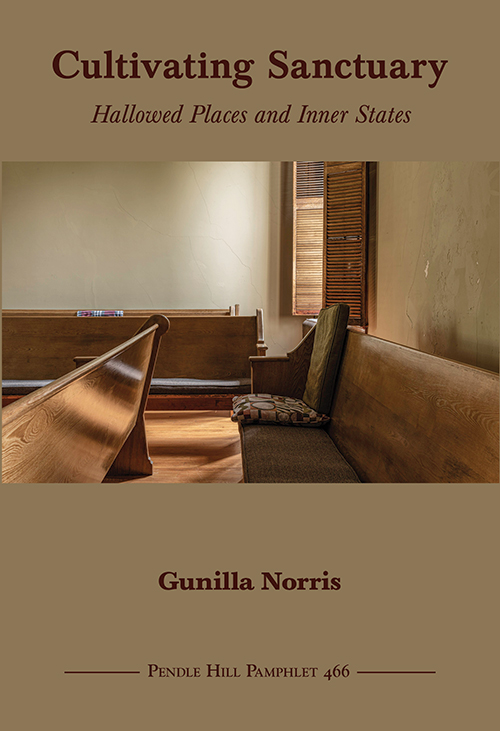
Cultivating Sanctuary: Hallowed Places and Inner States
Reviewed by William Shetter
September 1, 2021
By Gunilla Norris. Pendle Hill Pamphlets (number 466), 2020. 27 pages. $7.50/pamphlet.
Friend Gunilla Norris has blessed us once again: this time with an extended meditation on how we understand our meetings to be “sanctuaries.” Now, in a time of pandemic when we find refuge in our meetinghouses restricted, she urges an increased deepening of the sanctuary within and reliance on the sanctuary of others. She does not claim so directly, but in an oddly perverse way, it appears that the coronavirus itself is quietly providing a new and unanticipated passageway from reliance on physical space to inward sanctuaries.
She presents her discussion in two neatly divided parts. The first, an expansion of her article in the February 2020 issue of Friends Journal (“Scenes from a Meetinghouse”), describes her historic meetinghouse in Westerly, Rhode Island, evoking the atmosphere so skillfully that one can practically hear the floor creaking! The six chosen aspects discussed in this part (Listening, Discernment, Questioning, Waiting, Limitations, and Breath) are illustrated with page-sized pictures that perfectly capture the mood of stillness before the first worshipers arrive. Each one provides a theme in and around the inner worship experience.
The staircase by which worshipers go up to the meetingroom on the second floor is an age-old image of spiritual ascent, and the steps and landing—even the white strip at the edge of each step—also serve as metaphors. The doorknob, placed long ago down at child level (a hint for her that we can be more childlike and open), is our clear signal that we are entering a whole new space filled with potentiality, at the same time a reminder that we can open doors into new behavior. The colorful patchwork quilts scattered around for cold days and the tall, fragile wooden shutters from long ago similarly serve as metaphors readily offering moral suggestions. The benches are arranged, as in most meetinghouses, to create an empty, reconciling “middle ground.”
The second half of the pamphlet shifts from the concrete aspects of sanctuary to the less obvious but deeper personal ones, still using the same six aspects. It is easy to imagine how Listening, Discernment, and Questioning can become sanctuaries. In Waiting, Norris subtly mingles the two distinct meanings of the verb. In worship, we are patiently waiting for divine promptings, but we are also waiting in the sense of serving by being on call, “wait staff” as it were. As God’s presence descends on us, we may escape from our inner predators and become sanctuaries for ourselves and others. “God breathes life into us,” but the Breath in worship is not something that Quakers think about very much. Here is where we sense a divine rhythm: before we can draw in the fresh breath, it is a basic truth that we must let go of the old one. The sanctuary Norris finds here is that short, still space between inhaling and exhaling, always available as a place of refuge. That Limitations may become sanctuaries may seem paradoxical. Some are imposed on us by natural disasters such as storms or a pandemic, others by disease or aging. When a door shuts on us in this way, it can open into new challenges that we can experience as agents of transformation. She reminds us of this with Wendell Berry’s words: “The impeded stream is the one that sings.”
Clearly this handful of examples of sanctuary is only the beginning, with many more to discover. As Norris puts it, “What is sanctuary for us?. . . What we are really asking is, What is home for our souls? When we can answer that question, we will surely touch the essence of sanctuary.”
William Shetter is a member of Bloomington (Ind.) Meeting.


